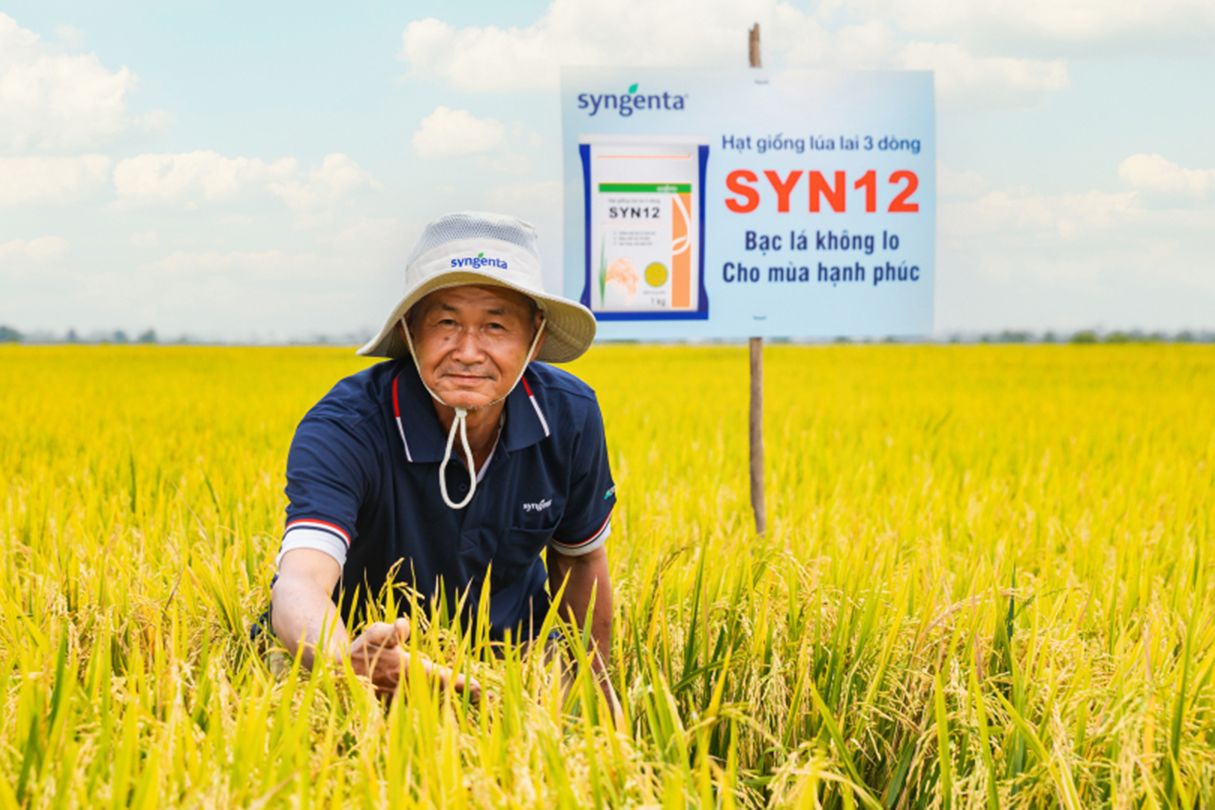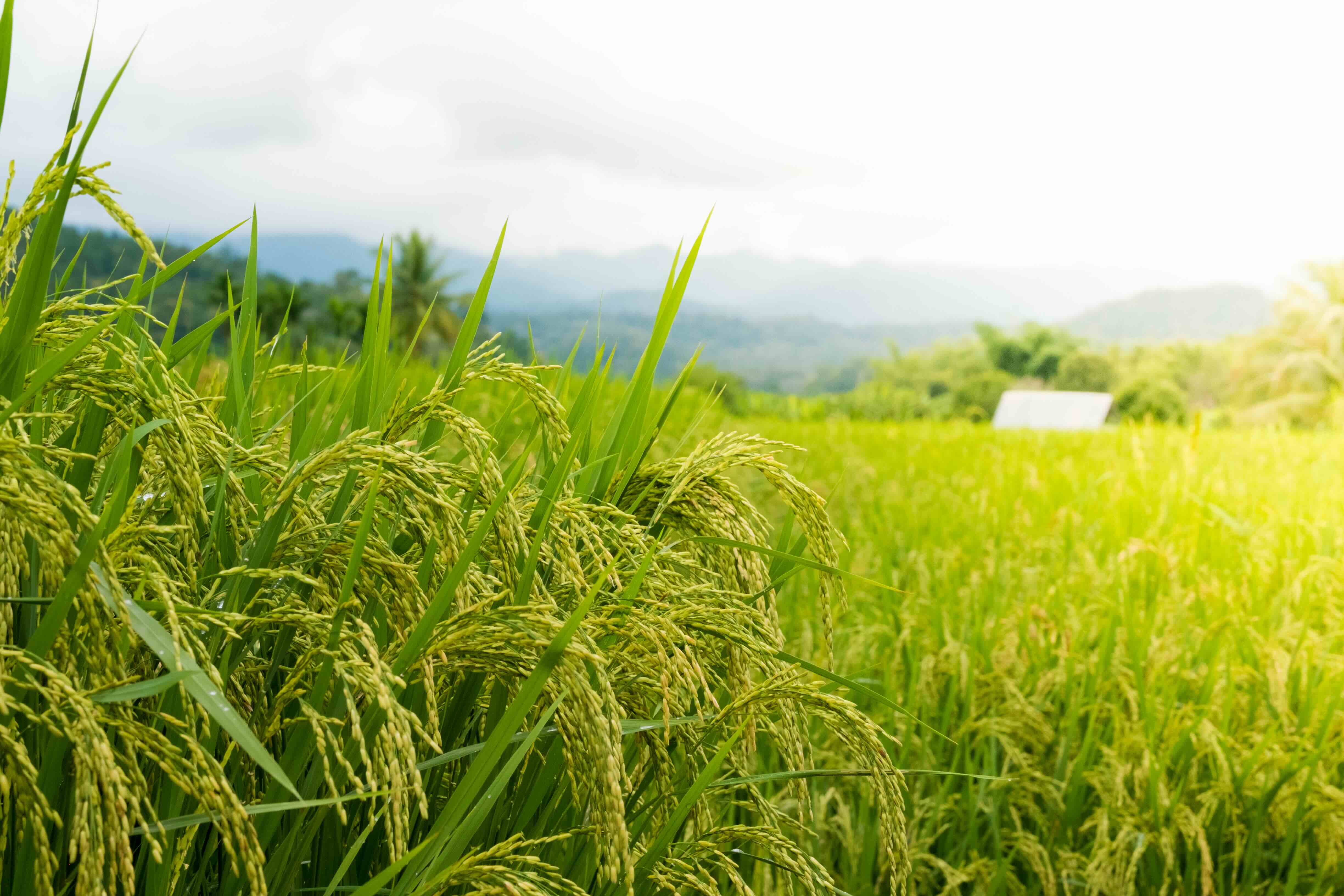Breeding resilient rice across Asia

How bold moves in hybrid rice are helping support the future of the world’s most important crop.
From his office in the Philippines, Mark John Barnizo, Syngenta’s Lead Rice Breeder in the country, smiles: "Rice is such an important food - a meal here simply isn’t complete without it on the table.”
Across Asia, rice is a cultural touchstone and a staple part of everyone’s diet. It’s not an exaggeration to say that rice is also the world’s most important crop. For half the world’s population, this staple grain is their main food source, and for over 140 million people, it’s a livelihood.
For half the world’s population, rice is their main food source.
For half the world’s population, rice is their main food source.
But rice - and the farmers who grow it - face some serious challenges, from adverse weather events to economic struggles.
“Here in the Philippines the big challenges for rice farmers are low yield, low selling prices and overall low profitability,” explains Barnizo.
One solution to these issues is hybridization - the crossing of two genetically distinct parent plants which creates offspring that typically outperform their parents. This natural phenomenon, called hybrid vigor or heterosis, helps farmers achieve higher yields from their rice crops while making the use of inputs more efficient.
“Inbred rice can be seen as easier to use, but hybrid varieties can generally offer 5-10 percent higher yields than existing inbred lines,” says Barnizo.
These higher yields are critical as rice farmers tend to be smallholders with limited access to mechanization that can raise productivity. So, hybrid varieties can deliver higher yields with greater efficiency, boosting both food security and farmer prosperity.
A higher yield isn’t the only benefit that hybrids offer. With careful selection, cultivation and a good understanding of different genetic lines, hybrids can be developed to carry genetic traits that help them cope with a range of different challenges.
Hybridization can help farmers maintain profitability and secure the future of rice production. Photo credit: Witthaya Prasongsin
Hybridization can help farmers maintain profitability and secure the future of rice production. Photo credit: Witthaya Prasongsin
“We have a lot of different varieties on offer: we breed for adverse environments like cold weather, or even resistance to diseases like Bacterial Leaf Blight,” says Barnizo.
With rice vulnerable to changes in weather, unique disease pressures and other threats, hybridization can help farmers maintain profitability and secure the future of rice production.
A detailed breeding and testing program is essential to make sure hybrids meet farmer expectations, adds Barnizo.
“With hybrids you must focus on producibility – good outcomes need to be able to scale. So, we trial hybrids across dozens of different locations to get data on how the environment and climate of each region might impact performance.”
Enhancing tailored hybrid solutions for the continent
However, these hybrids aren’t just boosting yields in one country, Syngenta is on track to bring the best new hybrids to some of the most important rice producing markets across the continent.
James Taylor-Alford, Head of Marketing and Strategy for AMEA, says: “We have hybrid rice products in India, Indonesia, Vietnam, Bangladesh, and the Philippines. We recently had successful registrations in Pakistan too.”
Each country has its own distinct challenges and pressures that farmers have to manage so getting the right hybrid to the right place begins with the plant’s genetics which go through a rigorous development and improvement process.
Given the complexity of balancing farmer needs with producing resilient, high-yielding and sustainable hybrids, the standards are exacting.
Anjana Rathnam, Rice Germplasm Development Lead, says: “All hybrids must meet various key performance indicators from eating quality and yield to disease traits. Plus, every hybrid goes through both internal checks and is checked against external benchmarks.
“We go from thousands of potential candidates to just a few hundred that might get close to commercialization,” adds Rathnam.
Given how time intensive breeding new hybrids can be, using new technology to guide decisions and drive insight into the different aspects of rice genetics is pivotal to speeding up the process.
Take genomic selection. This uses DNA markers across the entire rice genome to predict the genetic value of a breeding line, speeding up the processes by letting scientists anticipate how certain hybrid lines might perform without waiting for time consuming trials.
Rathnam explains: “Before 2022 it could take from nine to 12 years to bring a new hybrid to market. With genomic selection and other techniques, we’ve brought that down to seven to 8.5 years.”
Marking another significant leap forward in innovation for rice, Syngenta recently opened the state-of-the-art Hyderabad Innovation Center (HIC) in India. Once fully operational, it will house an array of advanced facilities including a breeding center to speed up the development of new rice hybrids, specialized labs for testing rice grain quality, Double Haploid technology for establishing strong parental lines for promising hybrids, and more than 250 acres of field crop nurseries.
Thippeswamy Sanka, Head of Rice R&D for Asia, says: “Through implementation of advanced genomic technologies, speed breeding facilities and mechanisation, and creating high throughput systems enabled with the best digital tools, we are bringing leading rice hybrids to farmers and to the plates of rice consumers.”
James Taylor-Alford, Syngenta Head of Marketing and Strategy for AMEA.
James Taylor-Alford, Syngenta Head of Marketing and Strategy for AMEA.
Anjana Rathnam, Syngenta Rice Germplasm Development Lead.
Anjana Rathnam, Syngenta Rice Germplasm Development Lead.
Breeding new hybrids is very time intensive, so using new technology to guide decisions and offer genetic insights is pivotal to speeding up the process.
Breeding new hybrids is very time intensive, so using new technology to guide decisions and offer genetic insights is pivotal to speeding up the process.
Producing seeds for the hybrids of the future
Once the hybrids have been developed and the genetics enhanced with beneficial traits, the next challenge is producing enough seeds for the farmers who need them.
But producing and supplying rice seed carries its own unique complexities, as Shyamsunder Singh, Head of Seeds Field Crops Production and Supply for AMEA, says: “Rice is a compulsive self-pollinator – and this is a problem as hybrids require a crossing of genetic lines to pass on those beneficial traits.”
Ultimately, the production of new hybrids requires both extensive technical expertise and deep understanding of the unique ways rice behaves. Singh says: “Rice seed production is both an art and a science involving millions of stigmas and trillions of pollen grains.”

Resilience and sustainability
Singh also raises an important question: “Rice is a resource guzzler and must be sustainable – how do we grow rice with less water, less resources and less labour?"
Hybrids offer clear sustainability benefits. “Hybrid rice is lower duration than standard rice – around 130 days rather than 150. This means hybrid rice uses less water and requires fewer inputs, especially with a hybrid that has good disease traits,” explains Singh.
Hybrids offer sustainability benefits, with hybrid rice using uses less water and requiring fewer inputs.
Hybrids offer sustainability benefits, with hybrid rice using uses less water and requiring fewer inputs.
Tom Holloway, Senior Technical Lead for Rice at Syngenta, agrees that hybrids are more sustainable, but points out that there is a bigger challenge to be solved.
“Boosting rice’s sustainability means dealing with methane emissions – if we convert rice’s global methane emissions into a CO2 equivalent (CO2e), it's similar to the aviation industry.”
So, where do these emissions come from? When fields are flooded it creates the perfect conditions for microscopic organisms called archaea. These organisms can flourish around the roots of rice plants and in the soil and are responsible for the methane from rice fields.
Holloway explains that there are some agronomic changes that can reduce the methane emissions. “Flooding creates the anaerobic conditions for the archaea to produce methane, so if we reduce the flooding time, there is a smaller window for methane production,” he says.
Additionally, there are some techniques that can reduce the need for flooding. There’s direct seeding, a technique that involves planting directly in fields rather than transplanting young plants from a nursery. This saves on labour but can see weed pressure increase.
Young rice transplanted in the field.
Young rice transplanted in the field.
Another approach is alternative wetting and drying. This technique uses much less water and through controlled irrigation it can keep the standing water level in fields low enough to reduce methane, but not so low as to induce stress and impact yield.
Holloway says: “We’re also working on finding scientific solutions to the problem of methane to help reduce the environmental impact of rice farming.”
Ensuring the resilience of the world’s most important crop is a huge challenge. The power of hybridization to boost yields and the on-going search for breakthrough innovations in agronomy and science are vital to secure rice production and make it ever more sustainable for the billions who depend on it.







